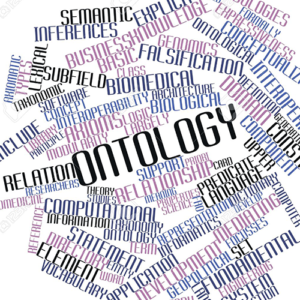Ontology based models in pervasive computing system
Summary
 By its kind, free and extensible pervasive computing, and a wide variety of sources to gather information that correspond to the issue of information exchange so the parts of the primary system must agree commissioned a set. Ontology, nothing seem to be able to adequate cover the concerns of the application designer is not suitable for the spread of computing, in particular, has developed a well-established mechanism for representing and exchanging ontology structures information. Paper compares the Ontology deemed popularity; often challenge the widespread recognition of the computing community. The paper successfully addressed in order to apply for the next generation of information systems to be careful ontological techniques that lead to determine the number of deficiencies in the system.
By its kind, free and extensible pervasive computing, and a wide variety of sources to gather information that correspond to the issue of information exchange so the parts of the primary system must agree commissioned a set. Ontology, nothing seem to be able to adequate cover the concerns of the application designer is not suitable for the spread of computing, in particular, has developed a well-established mechanism for representing and exchanging ontology structures information. Paper compares the Ontology deemed popularity; often challenge the widespread recognition of the computing community. The paper successfully addressed in order to apply for the next generation of information systems to be careful ontological techniques that lead to determine the number of deficiencies in the system.
The article consists of five sections; in the first segment information regarding ontology system has been explained which followed by the section in which author describe the nature of ontology structure and techniques being used in order to establish the ontology base systems. In part three, several system been discussed which based on ontology programs. Section four has critical understanding of those systems discussed in section three. Finally, conclude the article with future concerns in section five.
The discussion in this paper based on the workshop done by US national service foundation on disappearing computer strategies in 2004. The workshop core purpose is to find out the potential impact of new developments in technologies. Communication given talks ACM theme examines the fundamental principles of the original range of five “disappears computer” the following momentous issue:
- The development of a comprehensive computer system reaction will be needed to hold and explored the learning process, context parameter, the behavior of the person indicated, for sensing and context.
- Privacy, security, reliability, and arguments are risks associated with the interaction between users and service and reliability.
- Discover fundamental requirement of a comprehensive approach to the computer system or service, whether it is possible and filtering information from the types of raw materials (user sensors, services, applications, and so on).
- Design interaction and regular interaction are justified that appear broadly distributed computing environment, the human computer interaction. Including, the characteristics the virtual hybrid and interaction design to communicate with environment.
- Essential network a development tool to maintain and improve the communication network that will require throughout the life cycle, critical communications, and to be able to inform the user of the infrastructure effective error.
Ontology Background:
Under this Caption, the paper explains operational definitions that are being use for ontology, in order to identify specific domain knowledge, Expressed consensus terminology, and semantics of the formal aphorism and compel. This definition summarizes the general use of ontology software for communication between the components and modules in the system and the interaction between the systems. Paper Standard ontology language is use to support the processing of software agents Ontology systems easily.
The basic idea of developing ontology object of a system or number of functions and can be used to correspond by each party. General form ontology can be utilized between diverse systems and persistent computing. Paper discusses the development of modes for describing Ontology mechanisms. Paper describes best practices for the progress of ontology programs and spare parts, the principles of ontology model will be evaluated. Top development Technique was use to be as a starting point for developers. The strategy enlargement and assessment of ontology systems can be done by ontology developers, moreover they will be able to better sharing and reprocess of information.
Ontology in Pervasive Computing (Expand this part)
In this section, article considers a number of recent systems for ubiquitous computing using ontological models including Cobra (Chen et al., 2004b), Gaia (Ranganathan et al., 2004b), GLOSS (Coutaz et al., 2003) ASC (Strang et al., 2003b) and SOCAM (Gu et al., 2004). Each of them tries to domain heavyweights to create ontology pervasive computing.
- The Context Broker Architecture is a broker-centric as well as agent-based structure for context-aware computing and intelligent environments support system. It is a method in which we can obtain, maintain, and reason about context, knowledge sharing, identification, resolution of inconsistent knowledge, and to protect the privacy of users.
- Gaia is a platform for smart conditions; pervasive computing that can provide physical space to store. The major element of Gaia is the functionality of a system in physical space.
- A global space Smart is a software infrastructure for interaction between people, artifacts, and objects to support; considers both the content and movement on a global scale (Dearle et al., 2003b). Making use of the properties of natural environments, use GLOSS position and the movement of people as a source of labor across framework,
- Aspect-Scale-Context (ASC) is a model for describing the paintings and their relationship with Ontology as fundamental. The framework is collections of entities represent contextual information (such as a person, a place, or a business sharing). These are specific issues of the project.
- The Service-Oriented Context-Aware Middleware is used as a design that helps in the formation and quick prototyping of context-aware services in pervasive computing.
- The Project CoDAMoS Builds a customizable and extensible ontology for the creation of context-alert computing infrastructure, ranging from small portable devices High-end service platforms.
Evaluation of Systems
The systems are evaluated based on discussion in earlier clauses on the factors describe as sensing and context, privacy security and trust, design interaction, discover and essential infrastructure.
The SOUPA structure explains various vocabularies to different terms like (person, agent, event, space, time, action etc), this ontology defines for the special type of application.
The CONON, which is also known as SOCAM, works on the upper and lower domain into three hierarchies. Upper and lower domain defines the parameters such as person, location, activity.
The ASC and GLOSS works on basic parameters such as time, place, and event. On the other side, Gaia is working on parallel structure, which includes information, individual, communal, application and system contexts.
This paper concludes that SOUPA has powerful vocabulary that defines from very basic to extreme specific application factors. While other ontology system had limited constraint and axioms which restrict some event to happen, in evaluation to structure and concept SOUPA were given appreciated hand in terms of coherence, clarity, extensibility, ontological commitment, orthogonality and encoding bias.
Paper agrees with the analysis of Ranganathan, which concludes that DAML (and its analytical database details) is insufficient for thinking about the context of ubiquitous computing. This logic does not deal well with quantitative concepts, such as the quantity ordered and the vote even with spatial models. In a way, it is not surprising ontological models, for ubiquitous computing we need strong reason, a wide (and extensible) collection of styles considered. OWL comes from DAML+OIL, the number of changes, such as the abolition of restrictions that define eligible properties capacities symmetry and the absence of abstract syntax unusually designed, DAML+OIL. However, dealing with these extensions are not those holes.
Questions on the use of the medium between the device and the environment are trying to do in the new position. Person cannot handle it and the obligations of the pump configuration are not available, they should be made to the discovery or pairing things better integrated. Ubiquitous computing environments are characterized as having a variety of interactive interfaces. The variety of possible interfaces raises two problems; one of them is the development of legislation man-machine interaction (HMI) for end users, and the other one is the exposure of these interfaces in a standard way for developers of ubiquitous systems. HMI end users perspective is outside the purposes of this article because it is better in other subjects.
Pervasive computing offers different challenges for the development of ontology of the traditional applications of computer science. The information in ubiquitous computing environments can be created from unreliable sources or defective and in this direction, “with a grain of salt”. If parts of ubiquitous computing environment deal with the real world, they come with certain restrictions: sensors in the area are inherently vague, breaking as it could be, or might cover incorrect because against a phenomenon which is not designed.
Conclusion
Some of the shortcomings are applicable to many applications ontology. It is often difficult to identify the boundaries of the domain model. If we have a known limitation, (“closed world” assumption) assumes that we are stronger claims about the lack of required information to apply the properties and relationships that are important to identify a priority, and can produce stronger checks for completeness and consistency. This limitation is often undesirable, and “open world” assumption is difficult to ensure that all elements of interest and consciousness itself.
Clearer distinction between high (information sharing), and are derived below (Collection of information) ontology. The first can accommodate multiple, where diversity while flexible products queries allow albeit with less precision. Does it make sense to offer multiple systems in order to make the perfect system instead of building a detailed description of the composition questioned by critics? The Semantic Web.
The composition is extremely beneficial in an open system. The label privacy security and trust can prove very clear: This is a new problem affects all aspects of the system for the collection, processing, exchange, and use of information. This clearly perpendicular to the specific context, and require different, however, it is necessary to develop other mechanisms that rely on ontology and knowledge to influence conversion.

